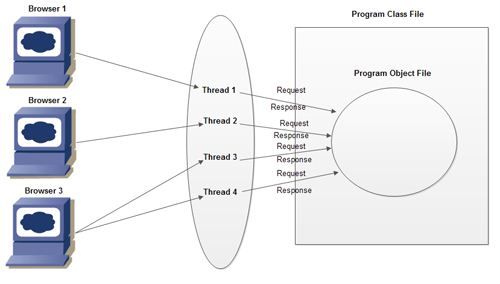When four requests are given to a Servlet program.
a) The Servlet container creates one object of that Servlet class.
b) Servlet container starts 4 threads on that object representing 4 requests on per request basis.
c) Servlet container creates 4 sets of request, response objects on one set per each request. (if any change is occur recompile, reload.)

Every thread can be identified through its “thread name”. Every object can be identified with its unique number called “Hashcode”. To get the Hashcode of any object call Hashcode() of an that object.
 Dinesh Thakur holds an B.C.A, MCDBA, MCSD certifications. Dinesh authors the hugely popular
Dinesh Thakur holds an B.C.A, MCDBA, MCSD certifications. Dinesh authors the hugely popular